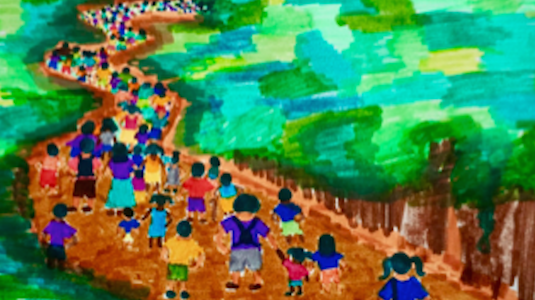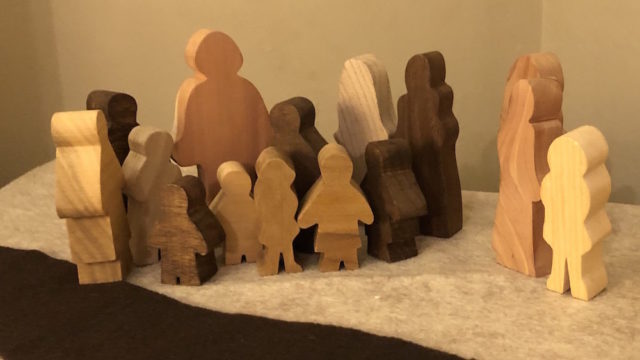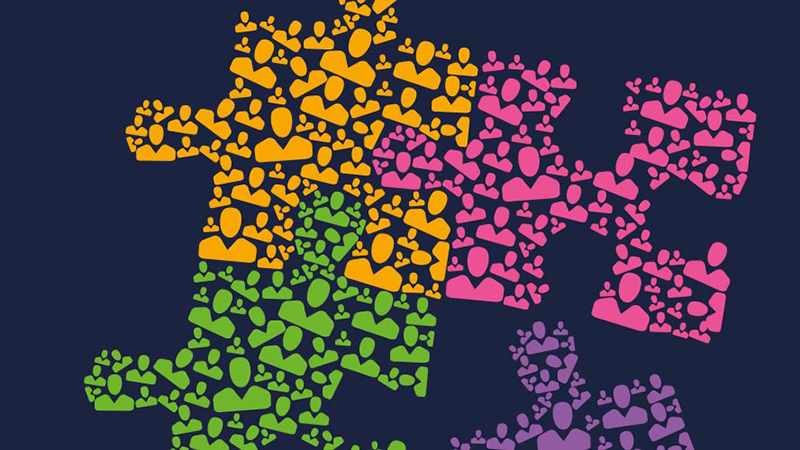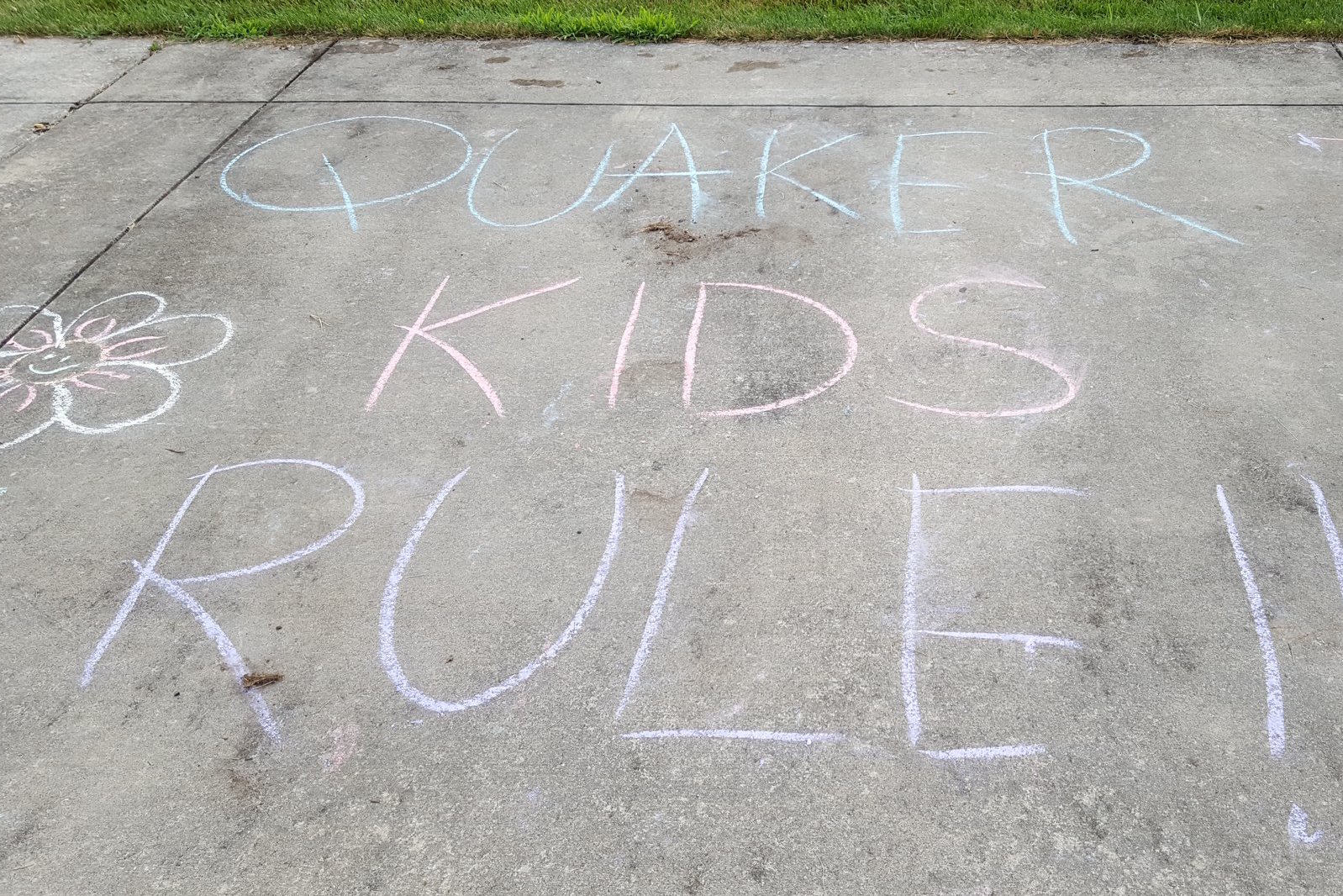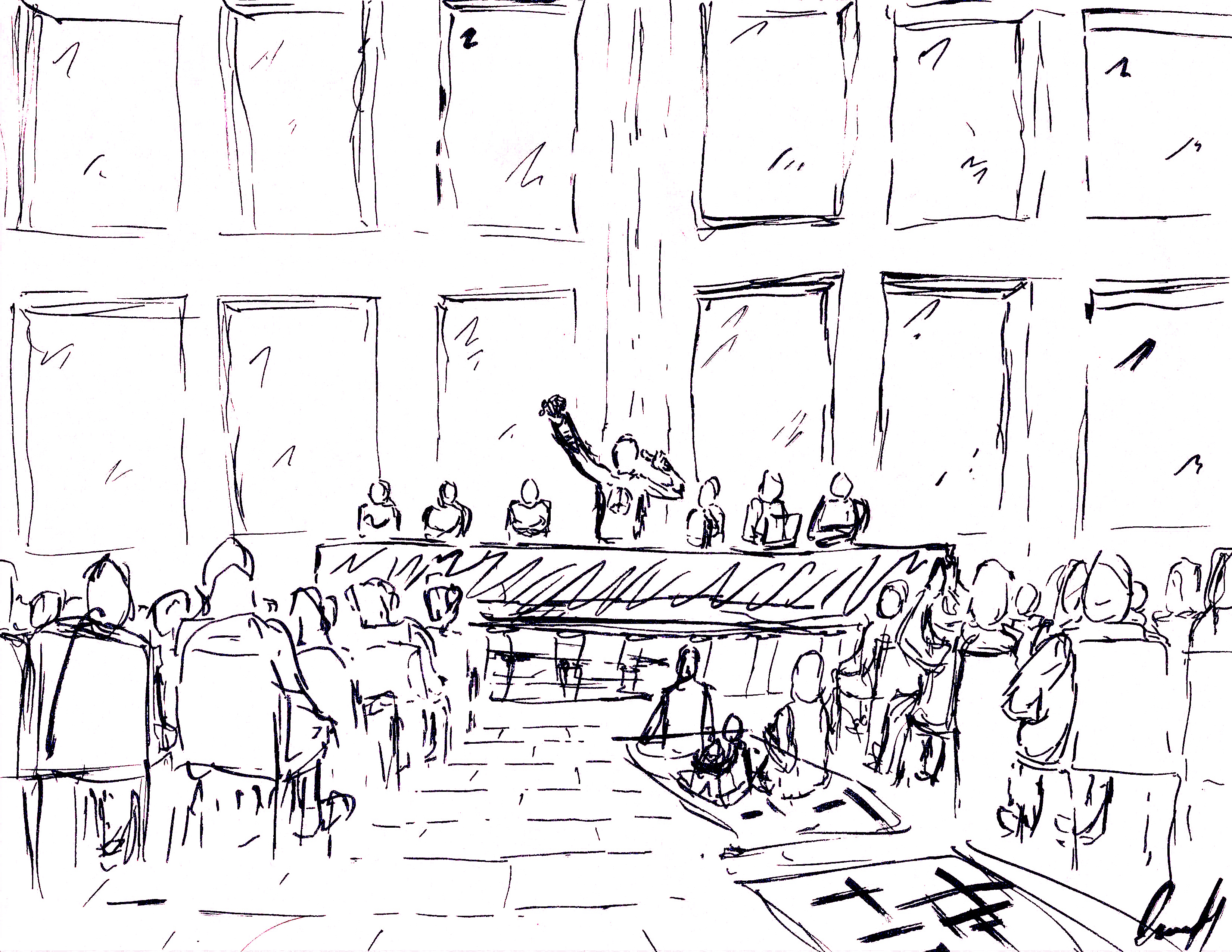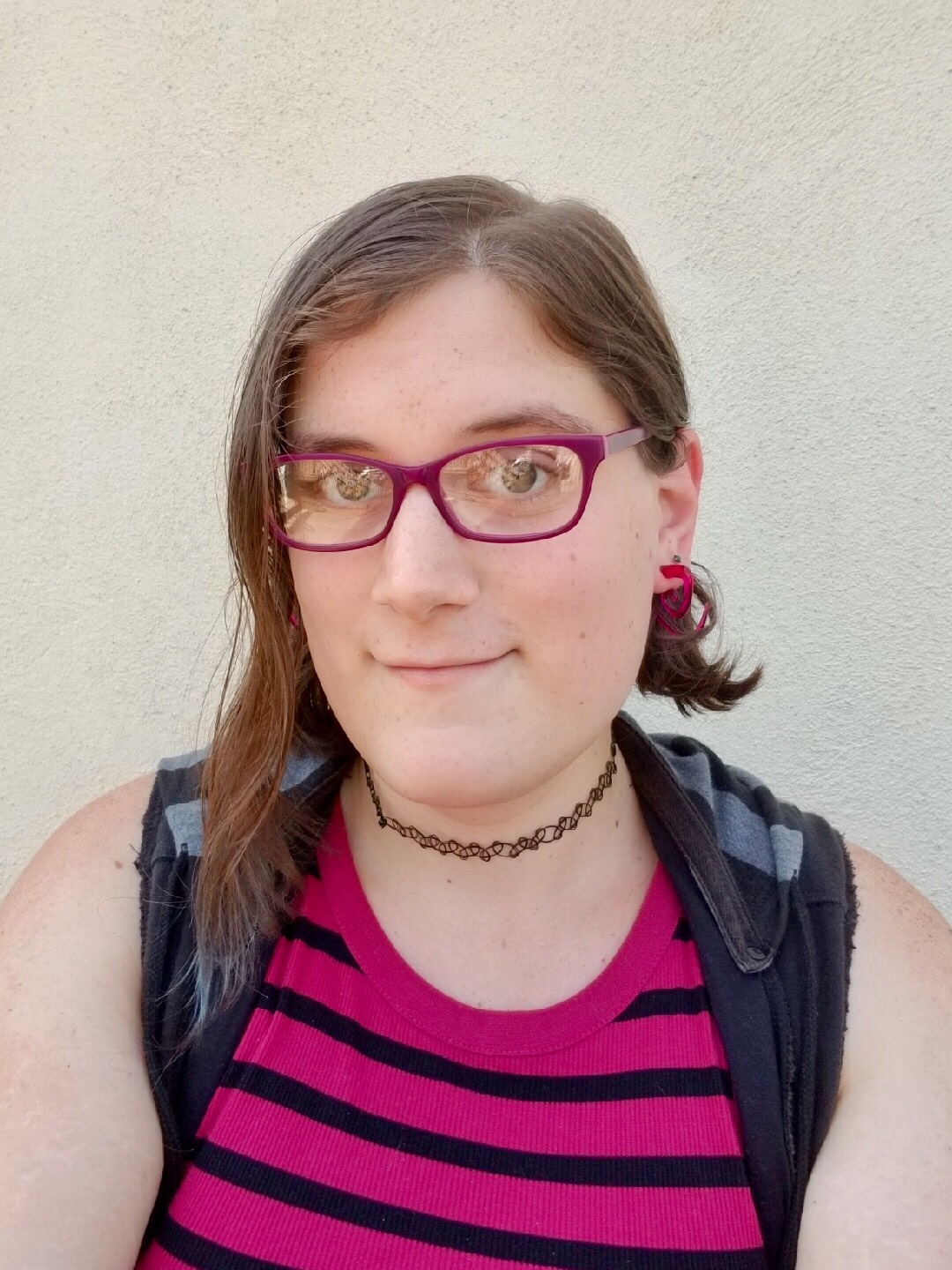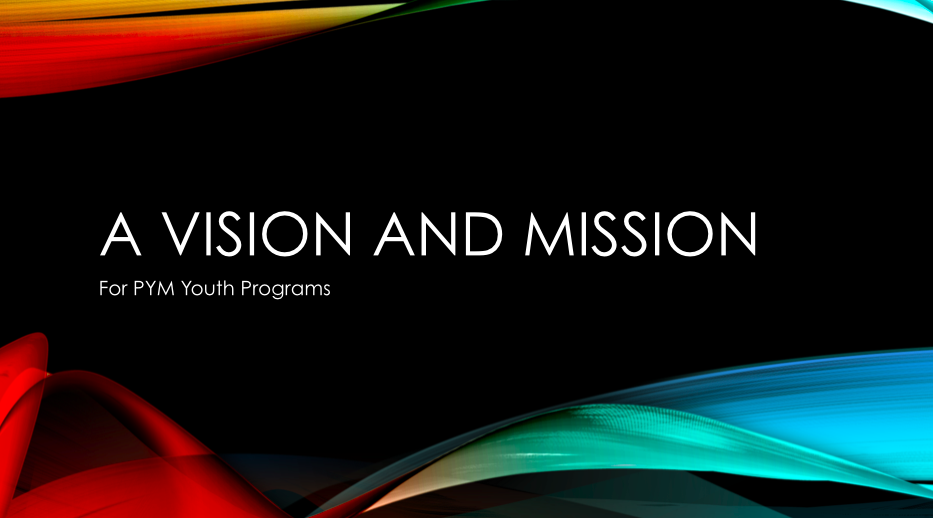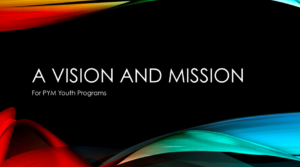Providence Meeting Middle School Friends’ concern for immigrants began when we saw pictures of immigrants on the news and how they were being treated at the US Mexico border. That led to our first fundraiser and learning more about the immigrant situation. We heard that families were being separated, and knew we needed to learn more about migrant life at the border and how we could help. [Read more…] about Youth Call for Action in Support of Immigrants
Friends Who Care For Youth
First Day Programs: What do you need?
What do you need?
A small and vital question to be asking one another in these days. What do families in our meetings, and the adults who have care of religious education programs for children and young people, need to support the spiritual lives children and young people?
What do you need to gather?
There is no “right way” to be gathering in this time, when the needs of Friends and our capacities to meet them are unique and sometimes changing: [Read more…] about First Day Programs: What do you need?
Threshing on Membership Report
View a downloadable/PDF version of the report here.
Introduction
The bulk of this report is made of minutes of exercise taken by PYM Recording Clerk, Jim Herr. The minutes review the proceedings of the day. Following the minutes of exercise, the report contains a transcription of collections of “advice to the yearly meeting” in response to several queries that participants wrote down in small groups. Find in Appendix A the advance documents that were provided ahead of the threshing session.
FGC Shares Children’s Resources from PYM Staff
The September issue of “Vital Friends,” the e-newsletter from Friends General Conference (FGC), highlights “Religious Education Programming for Children.” Melinda Wenner Bradley, serving PYM as Youth Religious Life Coordinator, was asked to contribute to the issue.
FGC staff write, “Melinda’s work as a consultant and trainer for religious education programming has produced several worthwhile resources for Quaker parents and teachers. Here, we’ve included highlights of her work, beginning with a beautiful essay about her ministry.”
The essays and articles shared can be found — along with other great resources for children’s religious education programs — at this link. They include pieces on fostering community, exploring vocal ministry, a lesson on being present and worship, and nurturing children’s spiritual lives.
See the PYM website page, “Writings on Religious Education: Practical and Prophetic” for more resources for welcoming and nurturing children, their families, and the people who support programs for youth in meeting communities.
Childcare is a Priority
Our wider yearly meeting community is made of many local meetings and worship groups across Pennsylvania, Maryland, Delaware, and New Jersey. We value the gifts, leadings, and ministry of everyone of every stripe! This includes the families and parents among us and their children.
Philadelphia Yearly Meeting therefore commits to offering childcare as much as we are able at committee meetings, PYM-sponsored events, and even quarterly-meeting-sponsored events. By making childcare consistently available with no requirement for pre-registration, the hope is that families, parents, and children will feel they are welcomed to participate to whatever extent sparks joy!
We hope you’ll take a look at our how to guides section of the PYM website, especially the page for arranging childcare.
Families Sharing Stories in the Christmas Season
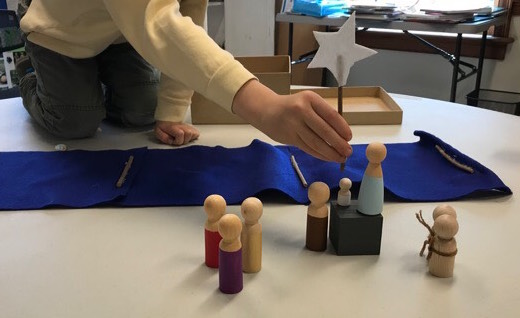 “Parents are their children’s first and most important teachers,” was wisdom I learned from my mother, who was an advocate for children and families in all her work. It was some of the most important learning I took into the classroom with me as a teacher. It is of course true as well in religious education, though I would widen the role to include grandparents and other caregivers helping to raise a child. Stories often provide common ground across generations for sharing what’s in our hearts and teaching about our faith.
“Parents are their children’s first and most important teachers,” was wisdom I learned from my mother, who was an advocate for children and families in all her work. It was some of the most important learning I took into the classroom with me as a teacher. It is of course true as well in religious education, though I would widen the role to include grandparents and other caregivers helping to raise a child. Stories often provide common ground across generations for sharing what’s in our hearts and teaching about our faith.
Amy Owsley from Third Haven Friends Meeting shares how families in the meeting came together to share the Christmas story with their children, and with one another. In a season often focused on worldly delights and diversions, how could the time before Christmas — a day that Friends did not traditionally celebrate as a holiday — also be about exploring the “meaning and relevance of the Christmas story in our lives today.”
Last September at a First Day School family open house, the PYM Youth Engagement Coordinator, Melinda Wenner Bradley, spoke to us about “Children, Families, and the Quaker Community.” One of the resources she shared was a story about the Advent season, adapted for Friends from the Godly Play story. It was just one of a whole batch of rich resources, but the idea of this particular story caught the heart of several families. We wondered if we could use this story to imbibe the busy, hectic Christmas season with more meaning? And we could we do this individually with our families at home, but in a way that built community among our families in the Meeting?
Right after Thanksgiving, several families gathered together with reams of felt, little wooden peg figures, paint and sewing needles to make the materials needed to tell the story. One our Meeting members, Susan Claggett, began the evening by sharing with the parents a Faith & Play story, and giving us some pointers on storytelling at home. Together we then made a handful of “Advent story kits” that we could take home. The kits are humble little collections — not a bit of polish to them! They are simple, made with heart, and carry our collective hope for creating connection and quiet in our lives during the holiday.
The Advent story can be told in four parts, so on each of the four Sundays of Advent, we share one more part of the story with our family at home. Then we informally share our experiences the next Sunday among our group at Meeting. The weeks unfold the Christmas story from the perspectives of the knowing prophets, the waiting and journeying of the holy family, the shepherds in the fields who are first to receive the news of the baby’s birth, the travels of the three Magi, and then the animals who witness the wonder of the birth of Jesus. We are finding such magic in a quiet moment with our families each week, dwelling on the meaning and relevance of the Christmas story in our lives today. Again, there isn’t any elegance or perfection here, as we are all fumbling a bit as we learn . . . but somehow this imperfection makes the experience sweeter and accessible, as our kids deepen their curiosity about the mystery of Christmas, and we parents deepen our kinship with others in the Meeting.
Exploring Vocal Ministry with Young People
“In worship we listen very carefully. Sometimes a person feels something happening inside that won’t go away. That person listens very hard to answer questions: “Is this from God or from somewhere else? Is this for me only, or for the group? If it is for everyone, do I share it now or later?” Sometimes the person feels words inside that are from God, that are for everyone, and that are for now. Then the person shares the message in a clear voice so everyone can hear the message.” These words are from the Faith & Play story, “Prayer and Friends Meeting for Worship,” that explores the spiritual practices in meeting for worship, including vocal ministry. How can we use experiential learning to explore with young people how Friends share Spirit-led vocal ministry as part of our communal worship? How can we provide opportunities to learn about and practice discerning the source of what we’re led to share, and lifting up our voice in community?
Openings for children to share their Light begin with creating safe spaces for them to share. The time we spend gathering and “building the circle” in programs for children and youth welcomes young people into spiritual community. Inviting each other to share and practicing deep listening when we do introductions or begin programs should be part of our process every time we gather. Before starting a lesson or story in the circle of children at meeting, we take the time to introduce newcomers and share something from our week. An exercise that I sometimes use in a new group is to invite each person to bring and share about a small object that is special or has significance to them. Set up a small table in the center of a circle and invite Friends when ready to share why the object they have brought is special to them, and place it on the table. You build a scared space together where images, words, and feelings can all be shared.
A way to approach worship sharing with children or in multigenerational groups is “Heart Sharing.” In Heart Sharing, we lift up a query for response, inviting the response to be “from the heart” and just a word or two. Rather than a thought-out response from the mind, it is from the heart. You can do Heart Sharing in a whole group, or break into smaller multi-age groups of 3-4 with suggested queries. Heart Sharing taps into the here-and-now of children’s spirituality. Children don’t necessarily differentiate between worship time and play time or work time. When we move beyond (or back from) the intellectual nuances and details often in adult responses, we make space for everyone to share from where they are.
Faith & Play stories are tools for teaching children about our faith and practice as Friends. The “wondering questions” that follow sharing a Faith & Play story make space for children to listen and reflect inwardly, or to wonder out loud with the group. The open-ended wondering questions can be used in response to any kind of story, whether it’s a Bible story, a children’s book, or asking how a child’s day at school went. The questions are open, invitational, and there are no “right” (or “wrong”) answers when we wonder together. It’s a place where all voices are invited, and yet not forced (children in the circle are not called on to answer the queries). There is also room for silence in this practice; when no one shares out loud, we can trust that wondering is happening inside. We can allow the pauses and spaces to model our Quaker practice of waiting worship and practice deepening how we listen inwardly. After many years of storytelling, I came to see the wondering time after the story as a place for children to practice sharing vocal ministry and hear their voices lifted up in the spiritual community.
How do we “teach” the practice of listening for God and knowing when a message is from Spirit and for us to share with the whole group? You can find several versions of “vocal ministry flow charts” from different Quaker sources online and see how they speak to you. One or more of them could be given to small groups and discussed, or you could make them into a kind of movement activity, like “red light, green light”: if the answer to one of the questions you ask yourself is yes, it’s a green light. If no, it’s “stop” and return to center. Teens at Friends Meeting of Washington were inspired by writing on this topic to create a skit for their meeting community about vocal ministry. The “Vocal Ministry Skit” is a playful and insightful resource to share, and can be found posted on the Quaker Religious Education Collaborative’s website. It’s a great conversation starter for a multigenerational group, as the skit requires “audience participation” and references contemporary tensions that can occur as we listen to the still small voice within.
Another resource that might be of interest to youth and multiage groups of teens and adults is the QuakerSpeak video, “How to Deepen Quaker Meeting for Worship.” At the 4:34 minute mark, a speaker lifts up several of the questions about when and whether to speak but stretches that discernment to include a question we might ask after sharing: “Do you feel that you were faithful in your speaking?” She opens a space for reflecting on our vocal ministry and seeing that practice as a skill we continue to develop.
Melinda Wenner Bradley, Youth Engagement Coordinator
(A version of this story first appeared in the November 2016 issue of “Spark” the New York YM newsletter.)
Featured image by Jacob Hoopes, Valley Meeting.
Young Friends Welcome Program Assistant
Following an extensive search process and interviews with several finalist candidates, PYM Youth Programs are delighted to welcome Aeryn Luminkith as the new Assistant in the Young Friends program. She will begin her work with Young Friends at their Christmas Gathering, December 27-30. We’re really pleased to welcome her to the staff team. Aeryn brings experience with teens and younger youth, has worked as a teaching assistant, art teacher, tutor, and photographer. During the interview process, Aeryn impressed us with her warmth and concern for inclusive youth community, and her interest in creating a balance in programming between playful and grounded energy.
From Aeryn: While working at Greene Street Friends School over the past year, as an after school program assistant and substitute TA, I’ve developed a deep appreciation for Quaker beliefs and values.The Quaker commitment to social justice and equality, where the voices of all community members carry the same weight, resonates very deeply with me. During my time at Greene Street, it has greatly influenced the ways that I interact with students, peers, and colleagues. I have multiple years of experience working with children and youth including two years working with high school students as a photography teacher and tutor in a non-profit youth center. I have also done LGBTQ advocacy work with non-profit organizations in this city. I strongly believe in supporting youth leadership and emotional development through fostering environments of mutual respect, understanding, and equal opportunities. Guiding youth to help them understand and dismantle systems of oppression is something that feels especially important to me, particularly when working with teens and young adults.
Young Friends program Facilitator Lori Sinitzky shared: “I’m excited to work with Aeryn as we plan and facilitate upcoming Young Friends gatherings together. Aeryn brings many gifts to our community, including experience with photography and a commitment to working with youth. I know we have fun times ahead!”
Let love (and welcome, inclusion, knowledge, and action) be the first motion!
 In both my roles as a parent and educator, I’ve been part of many conversations since the 2016 election about “how do I parent/work with children/model activism/take care of myself” in response to events and news stories. In times of challenge, there is always more wisdom in the circle of people around us, whether in our families, meeting, or the wider world of Friends. During the time of greatest personal crisis in my life, when one of my children (then a toddler) had cancer, our family, local meeting, Friends school colleagues, and yearly meeting communities gathered around and journeyed with us. That was, in fact, what the pediatrician said to me when we first spoke after James’ diagnosis: “You are beginning a journey.”
In both my roles as a parent and educator, I’ve been part of many conversations since the 2016 election about “how do I parent/work with children/model activism/take care of myself” in response to events and news stories. In times of challenge, there is always more wisdom in the circle of people around us, whether in our families, meeting, or the wider world of Friends. During the time of greatest personal crisis in my life, when one of my children (then a toddler) had cancer, our family, local meeting, Friends school colleagues, and yearly meeting communities gathered around and journeyed with us. That was, in fact, what the pediatrician said to me when we first spoke after James’ diagnosis: “You are beginning a journey.”
Accompaniment on a journey can make an extraordinary difference, whether the journey is physical or spiritual. The times we’re living in certainly feel for some of us like a new path, and for others like a road walked too often. How can we provide accompaniment and spiritual nurture to children and young people in the days ahead? How can we support their interest in justice and participation in protest? How do we address worries and provide comfort? How do we recognize the Light in everyone — especially those who don’t hold the same views or values — and let love be the first motion?
Welcome: Among ourselves and to the stranger
Two of the best ways we can support our children are to take care of ourselves on this journey, and model for them both the giving and receiving of hospitality to others. Building connections and finding accompaniment is a powerful message to model for our children, who know how important friends are. In our yearly meeting, Youth Programs host Family Overnights for fellowship and worship together with all ages. We’re adding a Quaker Family Meetup event in April, and there are online communities for sharing information, like the “Families in Philadelphia Yearly Meeting Area” Facebook page. Explore with children and youth how we make our circle wider, and welcome others, whether it’s a visitor to meeting on First Day or reaching out in friendship and service in our neighborhood or community.
Knowledge and Inclusion: Hand in hand
Providing children with stories and images of people who live/look/worship/love differently than them or their family nurtures their compassion and experience of inclusion. How can we support young Friends if they are confronted with racism, Islamaphobia, misogyny, homophobia? Stories are a potent source for exploring the experiences of people different from us, as well as finding part of ourselves in their story. Check for and add to your meeting library books which center the lives of people of color (Friends and others), and also including stories like “Muslim Child” by Rukhsana Khan and “Before Columbus” by Charles C. Mann. This Fall, my meeting has focused our First Day program for children on, “Who is my neighbor?” and connected children’s books about refugee experiences with stories we’re witnessing in the news. Websites with excellent multicultural book collections and suggestions:
Early Childhood Anti-Bias Education
Children’s Books that Tackle Race and Ethnicity
Counter Islamophobia Through Stories of Muslim Kids As Heroes
Books to Help Kids Understand What It’s Like to Be a Refugee
Activism with Children and Youth
Several opportunities for children to be involved in age-appropriate activism are happening at this time. There are possibilities for each of us, at all ages, to find our entry into witness and activism. How do we know where our Light leads us to be God’s hands and feet and voice? One of the gifts we can give children is the tool of discernment. In PYM Youth Programs, our young people engage in this discernment as part of their retreats. Last summer at Annual Sessions we experienced the witness of Young Friends to Native Justice and gun violence concerns. Beth Collea, a Friend in New England YM, talks about giving a concern or a leading: “Give it the love test; Give it time; Give it over to a larger group.” She created a resource with these questions, to explore discernment with children: “When the Light it at Work in Us.”
Books and Resources for Young Activists:
35 Picture Books for Young Activists
8 Empowering Middle Grade Novels for Kids Interested in Social Justice
19 Books to Help Children Find Hope and Strength in Stressful Times
Teaching Radical Hope and Resistance
The wider circle of Friends is on this journey together. For adults who work and live with young people, there is wisdom in the advice to take care of yourself, pay attention to where young people are (do not assume or project feelings about events), provide accurate information, move to action you can take, and make space for prayer and silence as well as support from those around you. Let us walk together, and let love be the first motion.
Melinda Wenner Bradley, Youth Engagement Coordinator
(A version of this story first appeared in the March 2017 issue of “Spark” the New York YM newsletter)
Youth Programs Sprint Completes Work: Thank You!
With gratitude for their service, Youth Sprint III has been laid down, having completed their work on the Vision and Mission statements for Youth Programs, and with the formation of a Youth Programs Advisory Committee (YPAC), approved by the Quaker Life Council at its meeting on October 20, 2018.
The Quaker Life Council (QLC) Youth Programs Advisory Committee will consist of eleven people, including two Middle-School-age and two High-School-age members. The committee will have at least one parent of a current participant in a youth program of PYM (at a monthly, quarterly or yearly meeting level) as a member, and the PYM Associate Secretary for Program and Religious Life and the Youth Engagement Coordinator will also be members of the committee, serving ex officio.
“With Divine assistance, the Youth Programs Advisory Committee sets the overall direction of PYM youth programs under the guidance of the vision and mission. The committee works closely with pertinent PYM staff, monthly and quarterly meeting staff and community members who care for our youth. The committee helps to season issues, respond to concerns, and hold youth programs in loving care. A key operating principle of this committee is to empower youth voice and share power in the context of beloved community. The committee embodies this principle through the way it conducts its affairs and fulfills its charge outlined here.” – from the Quaker Life Council Corollary Handbook, page 7
A powerpoint presentation on the Vision and Mission for PYM Youth Programs was shared at Annual Sessions in July 2018, and is linked below.
Deep gratitude to the Youth Sprint III members, and all who contributed to the process of articulating a vision grounded in community, accessibility, Quaker faith and values, and meaningful participation.
